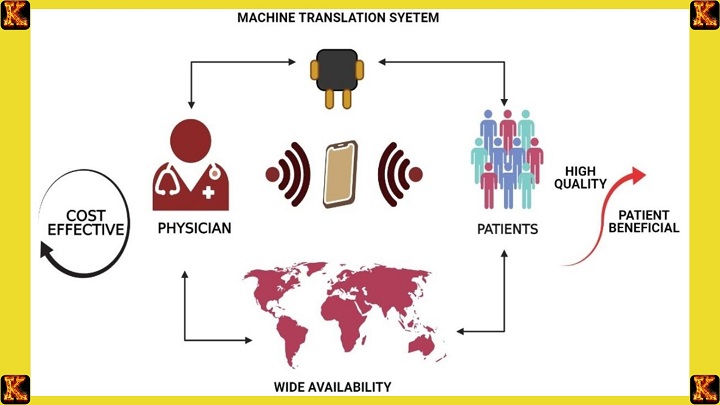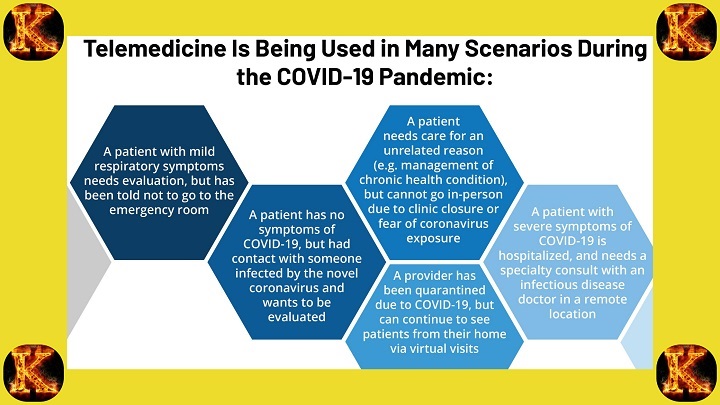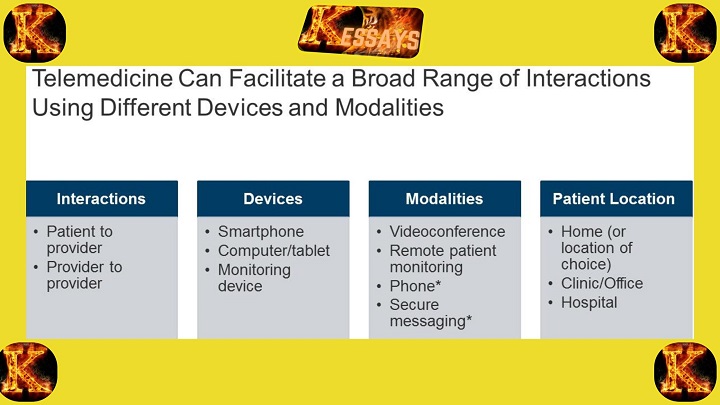Introduction
Telehealth has revolutionized healthcare by significantly enhancing patient education and providing critical resources and information remotely. Through telehealth platforms, patients now have access to a wealth of educational materials, interactive tools, and real-time support. This approach allows individuals to manage their health more proactively while receiving personalized education tailored to their specific conditions and needs. By fostering greater understanding and adherence to treatment plans, telehealth empowers patients, strengthens self-management, and promotes informed decision-making. Ultimately, this leads to improved health outcomes and increased satisfaction with care.
Understanding Telehealth
Telehealth is a broad concept that encompasses a wide range of services, including remote patient education. It enables individuals to gain comprehensive knowledge about their health conditions and treatments without the limitations of traditional in-person care. Patients can continue learning about their diagnoses, medications, and lifestyle adjustments from the comfort of their homes. By integrating personalized guidance into telehealth platforms, healthcare providers can ensure that patients not only receive the information they need but also understand how to apply it effectively in their daily lives.
Access to Resources
One of the greatest strengths of telehealth in patient education lies in the easy availability of resources. Patients can access a variety of materials, such as condition-specific videos, tutorials, and interactive modules, that explain medical concepts in simple terms. This library of information helps patients learn at their own pace, revisit content when necessary, and share resources with family members or caregivers. The accessibility of these tools ensures that patients remain informed and engaged throughout their care journey.
Continuous Support
Telehealth platforms also provide ongoing communication between patients and healthcare providers, bridging the gap between scheduled visits. Patients can ask questions in real time, clarify uncertainties, and receive timely feedback regarding their treatment or condition. This constant line of communication reassures patients and encourages them to remain active participants in their care. It also allows providers to address concerns promptly, reducing the risk of complications and improving adherence to treatment recommendations.
Promoting Self-Management
A core advantage of telehealth-based education is its role in promoting patient self-management. With better access to knowledge and support, patients are empowered to take control of their health decisions. They gain confidence in managing chronic conditions, monitoring symptoms, and following prescribed treatment plans. By equipping patients with the right tools and knowledge, telehealth fosters responsibility, accountability, and long-term commitment to healthier lifestyles.
Convenience and Efficiency
Convenience is another defining benefit of telehealth in patient education. Instead of frequent in-person visits, patients can receive the same level of guidance and education from their homes. This saves time and resources not only for patients but also for healthcare providers. For individuals living in remote or underserved areas, telehealth eliminates geographical barriers, ensuring equitable access to quality education and support. The result is a more efficient and cost-effective healthcare delivery model that benefits all parties involved.
Read Also: Nursing leadership and Collaboration Case Study
Advantages and Disadvantages of Telehealth
How to Use Telehealth for Education
Telehealth provides patients with powerful tools to learn more about their health conditions and management strategies. By combining access to digital resources with direct interaction with healthcare providers, telehealth ensures that education is both accessible and personalized. Patients can engage through online portals, mobile apps, video consultations, and integrated self-management tools, making learning flexible and effective.
Accessing Educational Materials
Telehealth platforms often provide extensive educational resources through online portals and healthcare provider websites. Patients can log in to explore articles, videos, pamphlets, and interactive modules covering topics such as medications, treatment options, and lifestyle adjustments. In addition, many healthcare organizations offer mobile applications that provide tailored content based on specific conditions. These apps give patients convenient, on-the-go access to reliable health information, ensuring learning is not confined to clinic visits.
Interacting with Healthcare Providers
Beyond static resources, telehealth facilitates direct interaction with healthcare professionals. Patients can schedule video consultations to ask questions, clarify instructions, and discuss treatment plans face-to-face in a virtual setting. Many platforms also offer secure messaging systems that allow patients to send queries to their providers asynchronously. This flexibility enables timely communication without requiring frequent in-person visits, enhancing support and reducing delays in care.
Personalized Approach to Learning
A key advantage of telehealth-based education is its personalization. Platforms often tailor educational content to a patient’s health profile, ensuring that information is relevant to their specific needs. This personalization empowers patients to focus on what matters most for their care journey. Additionally, telehealth allows individuals to learn at their own pace, reviewing materials multiple times and absorbing knowledge gradually. This flexibility improves comprehension and supports long-term lifestyle changes.
Integration with Self-Management Tools
Telehealth also integrates seamlessly with digital self-management tools. Remote monitoring devices such as blood pressure cuffs or glucose meters can transmit data directly to healthcare providers, enabling proactive adjustments and real-time feedback. Patients may also use health tracking apps to log symptoms, monitor medication adherence, or track lifestyle factors like diet and exercise. These tools not only enhance education but also strengthen accountability, helping patients stay engaged in managing their health.
Read Also: Nurse Educators: Empowering the Future of Nursing
Examples of Telehealth in Patient Education
Telehealth leverages digital tools to deliver patient education in innovative and accessible ways. From interactive group learning to personalized self-paced modules and real-time support, these applications make healthcare education more engaging, flexible, and effective.
Virtual Workshops
One example of telehealth in patient education is the use of virtual workshops. These interactive sessions bring together groups of patients through online platforms to participate in real-time discussions and activities. Guided by healthcare professionals, patients can ask questions, share personal experiences, and gain practical advice on topics such as diabetes management, nutrition, mental health, and physical activity. The group setting also fosters peer learning and emotional support, making patients feel less isolated in their health journeys.
Remote Learning Modules
Another important application is the use of self-paced remote learning modules. Many telehealth platforms provide patients with access to tailored educational content designed around their specific conditions and needs. These modules may include videos, interactive lessons, and quizzes covering medical conditions, treatment options, and lifestyle modifications. By allowing patients to learn at their own pace and revisit materials whenever necessary, this approach promotes personalized education. It empowers patients to take ownership of their health and encourages long-term self-management.
Real-Time Support
Telehealth also offers real-time support through connected devices and applications. For example, remote monitoring tools for chronic conditions such as hypertension or heart disease can transmit data directly to healthcare providers. Based on this information, providers can offer immediate feedback, make adjustments to treatment plans, or alert patients to potential health concerns. This continuous guidance reinforces patient education by helping individuals understand how their daily habits affect their health while promoting adherence to treatment strategies.

Telehealth for Patient Education in Specific Areas
Telehealth has become especially valuable in chronic disease management and preventive care, where ongoing education and monitoring are critical. For conditions such as diabetes, telehealth provides patients with the tools, resources, and professional support needed to manage their health effectively. By combining remote monitoring, lifestyle education, and virtual consultations, patients gain greater control over their care while maintaining continuous communication with healthcare providers.
Comprehensive Glucose Monitoring
One of the key applications of telehealth in diabetes management is real-time glucose monitoring. Patients can use connected devices such as glucometers or continuous glucose monitors (CGMs) that transmit data directly to healthcare providers. This continuous flow of information allows providers to analyze trends, detect fluctuations early, and make timely recommendations. With this system, patients benefit from personalized feedback on medication adjustments, dietary choices, and lifestyle modifications, leading to better blood sugar control and reduced risk of complications.
Dietary and Lifestyle Management Education
Telehealth also supports patient education in areas such as diet and lifestyle; both crucial to managing diabetes. Through virtual counseling sessions, patients receive tailored nutritional guidance, meal planning tips, and exercise recommendations. In addition, telehealth platforms often provide educational materials that patients can revisit at their own pace. This proactive approach empowers individuals to make informed food choices, maintain balanced meal plans, and incorporate regular physical activity into their routines. By promoting healthier lifestyle habits, telehealth strengthens long-term disease management and overall well-being.
Remote Consultations and Follow-Ups
Regular communication with healthcare providers is essential for effective diabetes care, and telehealth makes this more accessible. Patients can schedule virtual consultations with endocrinologists, diabetes educators, dietitians, and other specialists. These appointments enable ongoing monitoring, timely adjustments in medication, and discussions about treatment goals and progress. The convenience of remote consultations reduces the need for frequent in-person visits while maintaining continuity of care. This accessibility enhances patient engagement and ensures that individuals remain actively involved in managing their condition.
Integration with Self-Management Tools
Many telehealth platforms integrate with diabetes management applications and devices such as insulin pumps or mobile health trackers. These tools allow patients to log blood glucose levels, monitor medication adherence, and track lifestyle factors like diet and exercise. Data collected through these devices can be shared with healthcare providers during virtual appointments, enabling more informed discussions and collaborative care planning. This integration fosters accountability, deepens patients’ understanding of their condition, and encourages adherence to personalized treatment strategies.
Read Also: Tyrosinemia Type 1: Rare Inherited Metabolic Disorder
Differences Between Telehealth and In-Person Care
Telehealth and in-person care represent two distinct approaches to healthcare delivery, each with its own advantages and limitations. While both aim to improve patient outcomes, they differ significantly in how services are provided, particularly in physical interaction, convenience, accessibility, and personalization.
Physical Interaction
Telehealth primarily depends on remote communication methods such as video calls, phone consultations, and secure messaging platforms. While this approach is effective for education, monitoring, and follow-up, it limits the ability to perform hands-on examinations. Physical assessments are restricted to what can be observed virtually or described by the patient. In contrast, in-person care allows for direct physical interaction between patients and healthcare providers. This includes palpation, diagnostic tests, and medical procedures that require a provider’s presence, elements that remain essential for comprehensive diagnosis and treatment.
Convenience and Accessibility
One of telehealth’s strongest advantages is convenience. It eliminates the need for patients to travel to healthcare facilities, reducing waiting times and minimizing disruptions to daily routines. This is particularly valuable for individuals in remote or rural areas who might otherwise face significant barriers to accessing care. On the other hand, in-person care often requires patients to arrange transportation, take time off work, or adjust personal schedules to attend appointments. These factors can make accessibility more challenging, especially for those living far from healthcare centers.
Personalization
Telehealth platforms excel in providing personalized education by leveraging patient data such as medical history, test results, and lifestyle factors. Digital systems can tailor educational resources and recommendations to meet specific patient needs, creating a more individualized learning experience. In-person care also offers personalization through direct face-to-face communication. Providers can explain diagnoses, demonstrate procedures, and answer questions in real time. However, the delivery of personalized education in this setting may rely more heavily on verbal discussions and printed materials during appointments, which can vary in depth depending on the time available and the nature of the visit.
Both telehealth and in-person care play crucial roles in modern healthcare, but they serve patients in different ways. Telehealth offers convenience, accessibility, and personalized digital education, while in-person care remains essential for hands-on assessments and procedures. Understanding these differences enables patients and providers to make informed choices about when each mode of care is most appropriate, ensuring that healthcare delivery is both effective and patient-centered.



Comments are closed!